The Essential Role of Gestalt Psychology in Logo Design
Your brain is a meaning machine.
It’s hardwired to find patterns, create order from chaos, and see a unified whole rather than a jumble of disconnected parts.
You don’t have to think about it. It just happens.
This automatic process is the bedrock of Gestalt psychology.
Good logo design speaks the native language of the brain. It uses these built-in perceptual shortcuts to create instantly cohesive, memorable, and right marks.
Bad design fights this language. It creates visual noise that forces the brain to work overtime, resulting in forgettable, confusing logos, or just feeling… off.
Let's be clear. This isn't about learning design “tricks.” This is about understanding the fundamental grammar of how we see. Once you grasp it, you'll never look at a logo the same way again.
- Gestalt psychology helps create cohesive logos that are memorable and easy to process, eliminating visual noise.
- Unified logos are simpler for the brain to recall than chaotic designs, reinforcing brand identity.
- The principles of Gestalt, like Figure-Ground and Closure, aid in achieving visual harmony in design.
- Effective logos combine multiple Gestalt principles to create a powerful overall impression.
- Clarity is paramount; clever designs should not become puzzles that hinder recognition.
What is Gestalt, Anyway? (And Why Should You Care?)

In the simplest terms, Gestalt is the theory that the human brain will always try to build a single, complete, and simple form from complex visual information.
The guiding principle, coined by the German psychologists who developed the theory, is that the whole is other than the sum of its parts.
Your brain isn't a passive camera; it is just recording pixels.
It’s an active interpreter, constantly trying to make sense of the world with the least effort.
Why does this matter for your business logo? Three reasons.
- Memorability: A logo that feels like a single, unified object is far easier for the brain to store and recall than one that looks like three ideas glued together.
- Speed: A cohesive logo is understood in a fraction of a second. This is critical in a world where your brand has milliseconds to make an impression.
- Professionalism: A visually balanced and unified logo instantly conveys a sense of order and competence. A disjointed, chaotic logo sends the opposite signal: amateurish and untrustworthy.
The Principles: A Quick Tour of Your Brain's Shortcuts
This isn't an academic lecture. This is a practical look at designers' core tools to create visual harmony.
Think of these not as rigid rules, but as recurring patterns in human perception.
Once you see them, you'll spot them everywhere.
The Principle of Figure-Ground (The Negative Space Darling)
This is the big one everyone talks about. It's the brain's ability to distinguish between a foreground object (the figure) and the background it rests on (the ground).
The most effective logos often use the ground as a canvas for a second, hidden image.
Of course, you can't mention this without bringing up the FedEx logo. That arrow between the ‘E' and the ‘x' is the poster child for clever negative space.
It's brilliant.
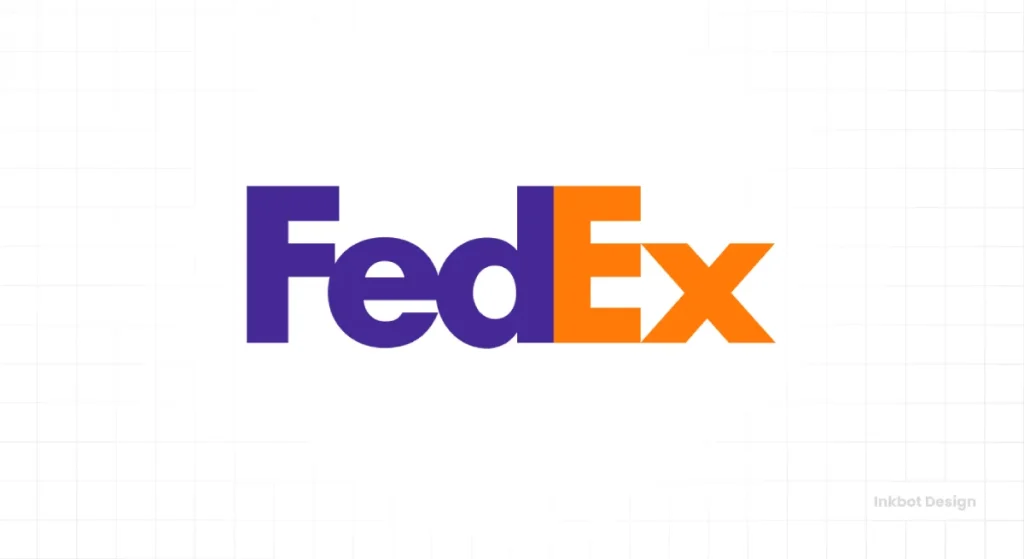
It's also been talked to death. Holding it up as the only goal makes clients and designers lazy.
Better examples exist. The Toblerone logo features a mountain, but look closer at the shading and see a standing bear, a nod to its hometown of Bern, the “City of Bears.”
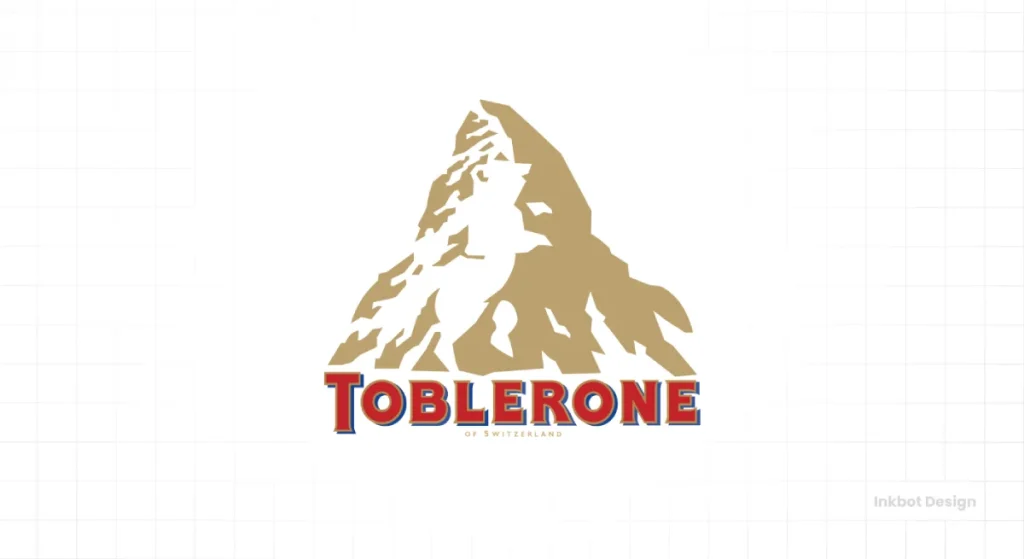
The Baskin-Robbins logo cleverly hides the number ‘31’ (for their original 31 flavours) within the brand's initials.
The key is that the hidden image must be discovered instantly and support the central brand idea.
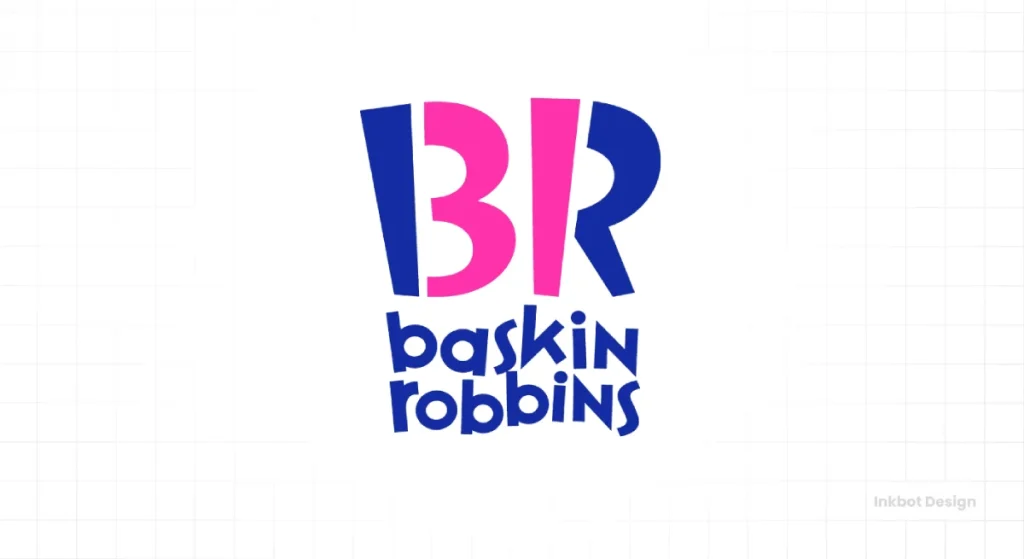
The Principle of Closure (Filling in the Gaps)
Your brain hates unfinished business. If gaps are in a familiar shape, your mind will automatically fill them in to create a complete object.
This principle allows designers to use minimal information to convey a complex idea.
It’s an invitation for the viewer to participate, which makes the logo more engaging and memorable.
The iconic World Wildlife Fund (WWF) panda is a masterclass in closure. No lines define its full back or head, yet you see a panda without hesitation.

The USA Network logo uses the principle to create the ‘S' in the middle from the ‘U' and ‘A' shapes. Your brain closes the gaps. The same goes for the famous Adobe ‘A'.
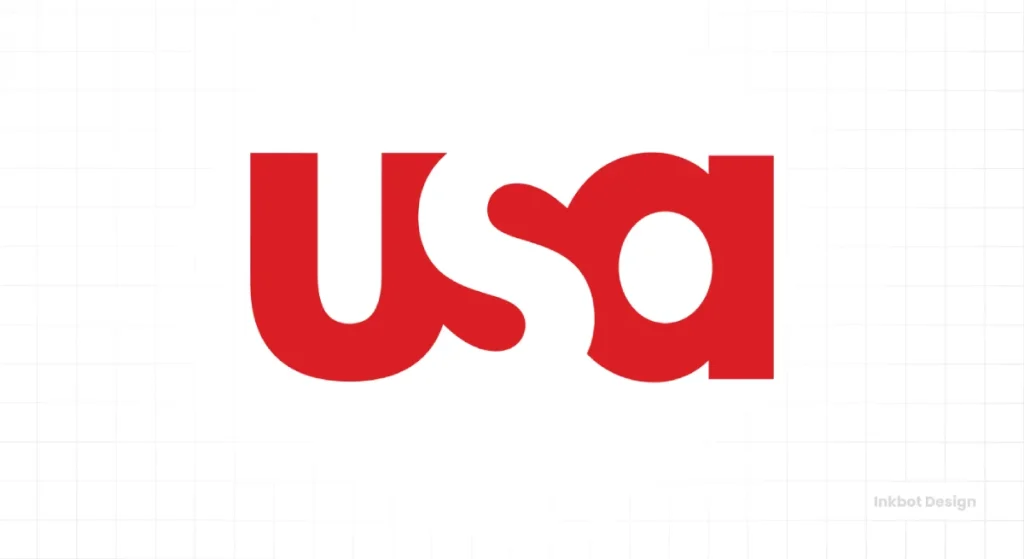
The Principle of Similarity (Grouping Like with Like)
We perceive objects that share visual characteristics—such as shape, size, colour, or texture—as belonging in a group.
This principle allows a series of disconnected elements to feel like a single, unified entity. Without it, many logos would fall apart into a meaningless collection of shapes.
Look at the NBC logo. We see a peacock not because the shapes are connected, but because the six teardrop “feathers” are similar in form and are arranged in a familiar pattern.

The power of the classic IBM logo comes from similarity; the horizontal blue stripes unify the three letters into a single, cohesive mark that speaks to digital dynamism.

The Principle of Proximity (Closeness Creates Unity)
This one is simple: objects that are close together are perceived as a group. The closer the elements, the stronger the perceived connection.
This is fundamental to logo composition. It’s how designers create a single visual unit out of multiple parts.
The Unilever ‘U' is a perfect example. It comprises 25 distinct icons, each representing a part of their business.
Because these icons are placed near form the shape of a ‘U', we don't see 25 little pictures; we see one strong, unified brand mark.
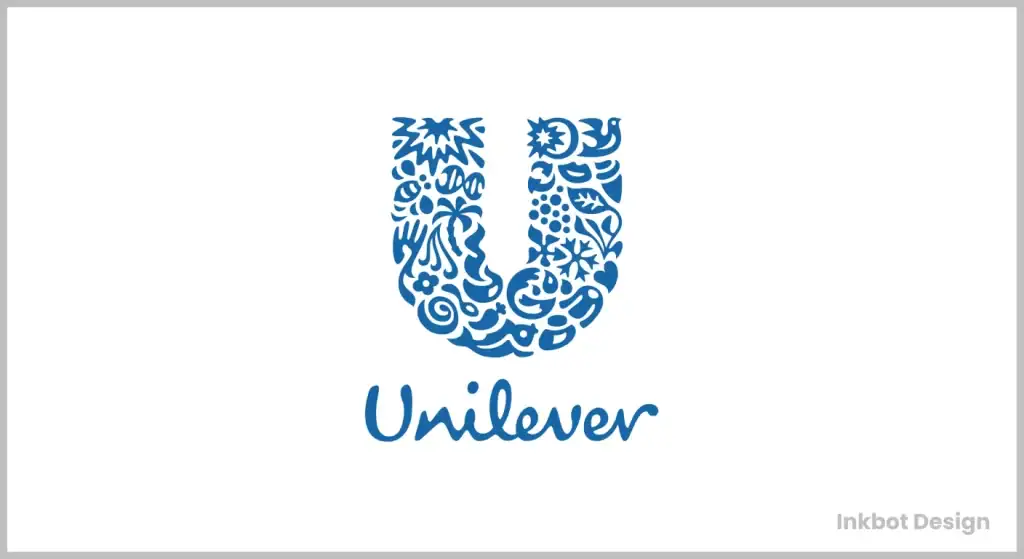
The Principle of Continuity & Common Fate (Following the Path)
The human eye likes to follow a line, a curve, or a sequence of similar shapes. We perceive elements arranged on a line or curve as more related than those not on that line or curve. This is Continuity.
Common Fate is a related idea: elements that appear to be moving in the same direction are perceived as a single group.
The Amazon logo is the champion here. The orange swoosh is a line your eye naturally follows from the a to the z.
This creates a sense of a complete journey (“we have everything from A to Z”) and a smile. The arrow at the end reinforces the idea of movement and direction—a classic case of Common Fate.

Great Logos Combine Principles, They Don't Collect Them
Here's my biggest pet peeve. The “which principle is this?” game is utterly pointless. It's an academic exercise that has nothing to do with creating effective design.
Great logos are a cocktail, not a single spirit.
They layer these principles to create a single, powerful impression.
The WWF logo isn't just Closure. It's also a masterful use of Figure-Ground contrast (the black shapes on the implied white background).
The Unilever logo uses Proximity to form the ‘U', but it relies on the Similarity of the icons' visual style to feel cohesive and not like a chaotic collage.
The real goal isn't to tick off a list of Gestalt principles. The goal is to achieve a state of Prägnanz.
It’s a German word that doesn’t translate perfectly, but essentially means a concise, orderly, and meaningful form. The brain craves Prägnanz.
It wants to see simple, stable things that make sense. That is the actual target of a great logo designer.
The Big Mistake: When “Clever” Becomes a Crutch
“I want a logo with a hidden meaning.” “Can you make it use negative space?”
These are the requests that signal a misunderstanding of the entire process.
Forcing a Gestalt “trick” where it doesn't fit is the fastest way to get a terrible logo. It leads to contrived, clunky, and often illegible designs.
A logo must first be appropriate for the brand. A serious financial institution has no business with a playful, hidden-animal logo.
A children's toy brand shouldn't have a stark, minimalist mark built on brutalist continuity.
Furthermore, a logo that is too clever becomes a puzzle. And puzzles are work. If a customer has to stare at your logo for 5 seconds to “get it,” the logo has failed. Its primary job is instant recognition.
Clarity trumps cleverness—every single time.
How to Judge a Logo Through a Gestalt Lens
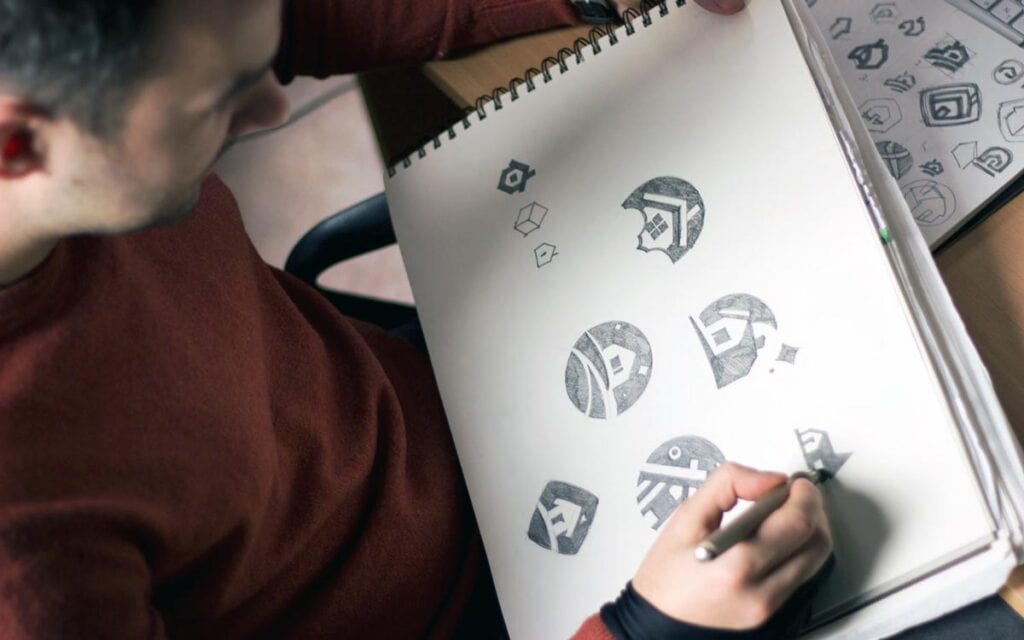
As a business owner, you don't need a designer's vocabulary. But you do need a way to judge whether a design is working. Forget the jargon and ask these simple questions about the logo concept.
Does it feel unified?
Look at the logo. Does it feel like one thing, or does it look like a few ideas stuck together? If the elements feel like they are fighting each other, it’s a failure of Proximity and Similarity.
Is it simple and easy to grasp in a second?
Cover it up, then look at it for just one second. Do you get it? Or is it a complicated mess that requires study? If it's not instantly clear, it lacks Prägnanz.
If there’s a “trick,” is it instant or a puzzle?
Do you see both meanings almost simultaneously if there is a Figure-Ground element? Or do you have to strain to find the “hidden” image? If it's work, it's a failure. The secondary image must support the primary one, not compete with it.
Is it visually balanced and stable?
Does your eye know where to go, or does it dart around trying to make sense of the composition? A well-designed logo guides the eye effortlessly. That's the power of Continuity.
Getting this right isn't easy. It takes a trained eye to see why one curve feels “right” and another feels “wrong.”
If you're struggling to judge a design proposal, that's what professional logo design is for.
An experienced designer internalises these principles so they can focus on the real goal: creating a mark that works for your business.
Stop Chasing Tricks, Start Seeking Cohesion
Gestalt psychology isn't a style guide or a menu of special effects. It's the underlying science of why some visuals connect with us and others fall flat. It's the invisible framework that holds every great logo together.
So, the next time you're briefing a designer or reviewing a concept, stop asking for tricks.
Don't ask for a “negative space logo” or a “closure logo.” Ask for a logo that is unified, memorable, and timeless. Ask for a logo that feels inevitable.
A good designer will know exactly what you mean, and they'll use the powerful, silent language of Gestalt to get you there.
Want to see how we put these principles into practice? Explore the work at Inkbot Design.
Frequently Asked Questions (FAQs)
What is Gestalt psychology in simple terms?
Gestalt psychology is the theory that the human brain automatically tries to perceive whole, complete shapes from individual elements, rather than seeing a collection of disconnected parts. Design is about making the whole greater than the sum of its parts.
Why are Gestalt principles important for logo design?
They are essential because they help create memorable, quickly recognisable, and visually cohesive logos. A logo with these principles feels professional and easier for a customer's brain to process and recall.
What is the most famous example of a Gestalt logo?
The FedEx logo, with its hidden arrow demonstrating the figure-ground principle, is arguably the most famous. However, the WWF panda (Closure) and the NBC peacock (Similarity) are classic examples.
What is the difference between Closure and Proximity?
Closure is when your brain fills in the missing pieces of an incomplete but familiar shape. Proximity is the principle that objects placed close to one another are perceived as a single group, regardless of their shape.
Can a logo use more than one Gestalt principle?
Yes, the best logos almost always do. For example, the Unilever logo uses Proximity to group icons into a ‘U' shape, and similarity in the visual style of those icons makes it feel cohesive.
Is negative space the same as the Figure-Ground principle?
Yes, “negative space” is the common term designers use for applying the Figure-Ground principle. It refers to the background space around and between an image's main subject(s).
What is the law of Prägnanz?
The law of Prägnanz is the core idea of Gestalt theory. It states that our brains will interpret complex or ambiguous images in the simplest, most complete, and most stable way possible. It's the brain's preference for order and simplicity.
Is it a bad sign if I can't see the “trick” in a logo?
Not necessarily. If the logo is extremely clever but the hidden element is too hard to know, it's a failed design. A logo must communicate its primary message instantly. The “trick” should be an effortless bonus, not a complex puzzle.
How can I use these principles to give feedback to my designer?
Instead of using the technical terms, describe the effect. For example, instead of saying “It needs more Proximity,” say “The elements feel disconnected, can we make them feel more like a single unit?” Instead of “Use Closure,” say “Can we simplify this shape while still making it recognisable?”
Where can I get a professional logo that uses these principles effectively?
An experienced design agency with a strong portfolio is the best place. They understand these principles intuitively and apply them to serve the brand's strategic goals, not just to make a clever picture. You can request a quote to discuss your project with experienced designers.
Your logo is the face of your business. Understanding the psychology behind a great design is the first step. The second is working with a team that has mastered it.
Explore our logo design services if you’re ready to move beyond clever tricks and invest in a truly cohesive and memorable brand identity. We build brands that your customers' brains are hardwired to remember.


